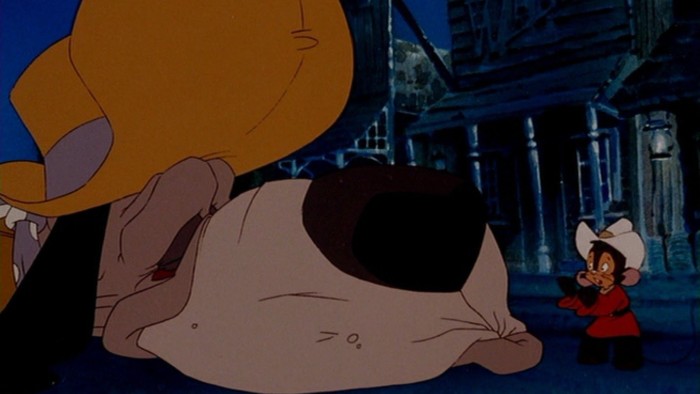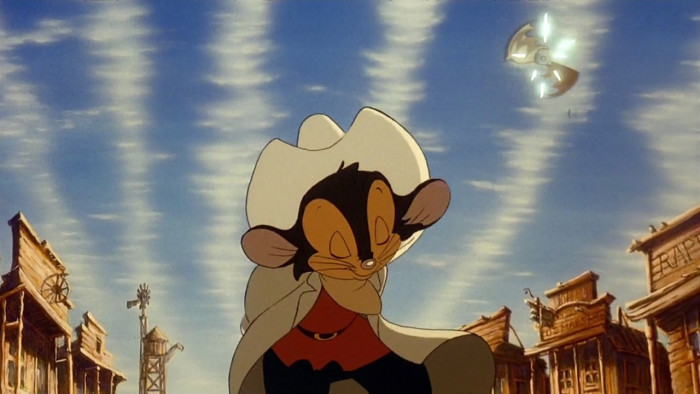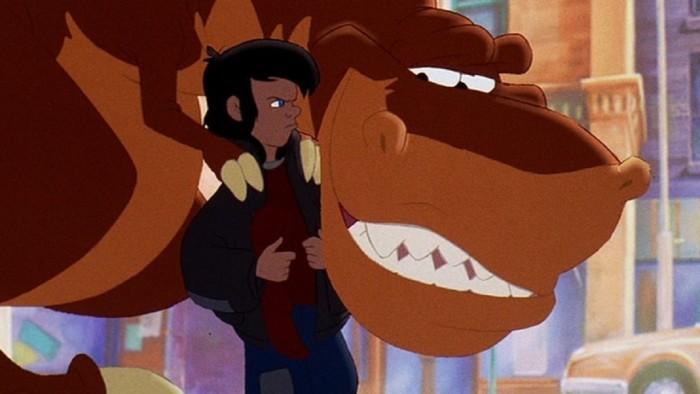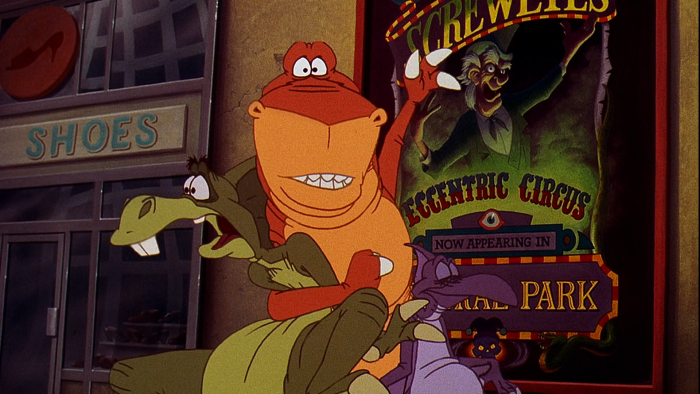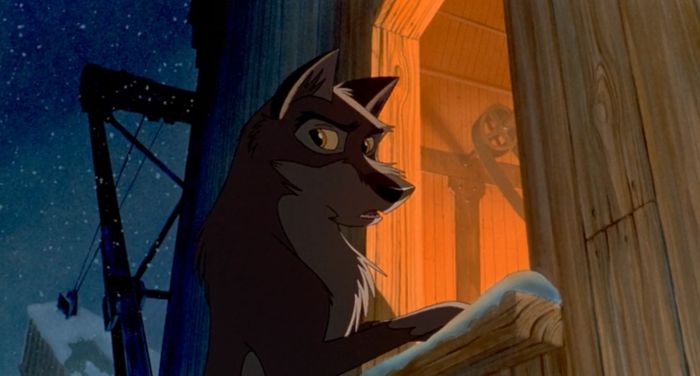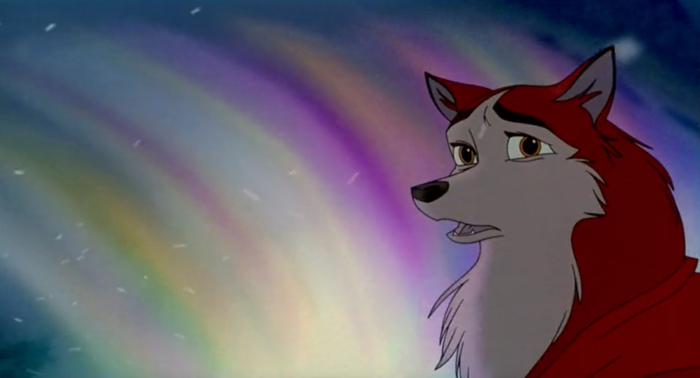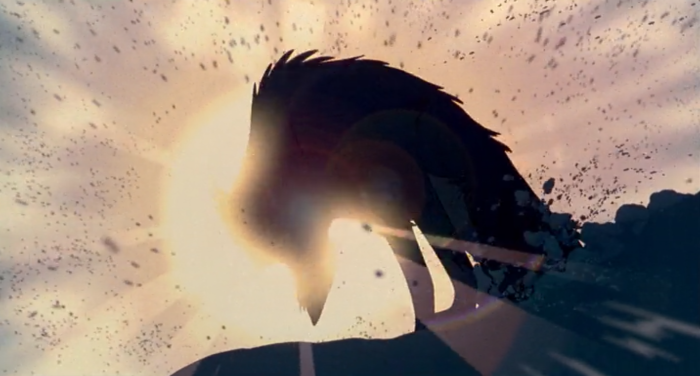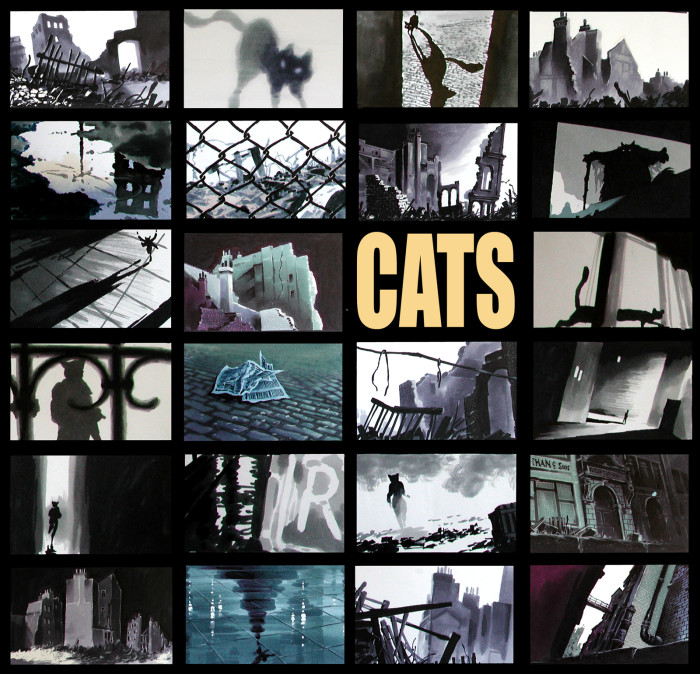The Short But Animated Legacy Of Amblimation – Does Their Work Hold Up?
(Welcome to Nostalgia Bomb, a series where we take a look back on beloved childhood favorites and discern whether or not they're actually any good. In this edition: we revisit the films of Amblimation, the short-lived animation arm of Steven Spielberg's Amblin Entertainment.)When you stroll down your personal movie memory lane, certain titles bring you back to a specific place and time. For me, I always travel back to my grandmother's living room carpet. I can still feel the dusty fibers between my tiny fingers – this was my movie zone. And in that space, my most vivid memories revolve around the creations of a specific studio: Amblimation. Despite only making three movies, they captured my heart and imagination.So in this edition of Nostalgia Bomb, let's go on a journey to explore this short-lived animation studio. A journey that involves a mouse, a group of dinosaurs, and a heroic wolf/dog. There will be laughs, tears, and James Horner. But this is also the story of the struggles of '90s animation. Because even though it may look pretty, and have Steven Spielberg involved, there are definitely bumps on the cinematic road to glory.
Where Did It Begin?
If you go in search of some buried treasure on YouTube, you may spot a video of a much younger Steven Spielberg speaking of his animated ambitions. Sure, he was considered one of the greatest directors of his generation, but he wanted more. Because after producing projects such as Who Framed Roger Rabbit, An American Tail, and The Land Before Time, Spielberg had an animation-related itch that he just needed to scratch. He wanted to be just like one of his heroes: Walt Disney. And he was willing to do anything to make that dream come true.This was when Spielberg and Universal Pictures joined forces to create their own animation studio. Assembling a team of 230 artists, they were ready to take the movie-watching world by storm. And by choosing unconventional ("non-princess") type projects, along with having a more cinematic approach to their work, they aimed to stand out from the competition. But could Amblin leave the kind of legacy that Disney did? Well, just like it did with Walt, this journey all started with a mouse... 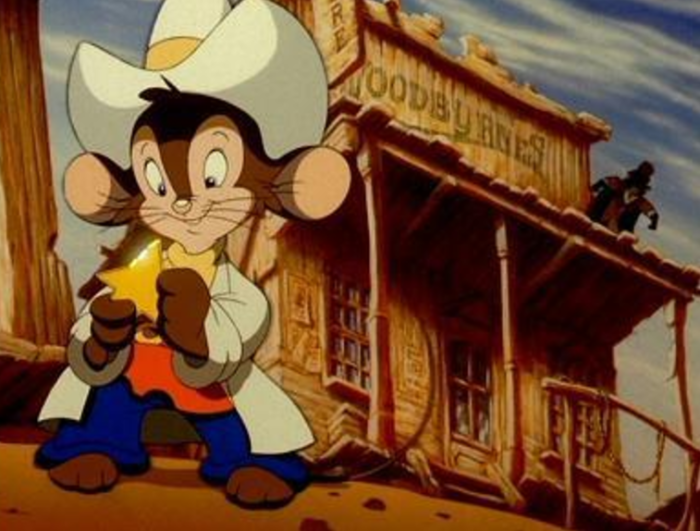
An American Tail: Fievel Goes West
Now I'm gonna be honest with you folks – I have never been an American Tail kind of gal. Though the adventures of this Russian mouse may look cute at first glance, there's always been this sort of Pinocchio-inspired feeling of melancholy to Fievel's story that little kid me just wasn't into. But when it comes to the sequel, Fievel Goes West, that distaste has lessened over the years.
In fact, this 180 revision of the franchise sees a number of improvements over the first installment. Though Don Bluth's films have their own sort of beauty, they tend to be very static, and the frame (with the exception of scenes from Rock-a-Doodle and Pebble and the Penguin) rarely moves, in fear of missing every bit of Don's puffy-cheeked creations. Yet in the sequel, that sometimes cold look into Fievel's world is exchanged for a much grander approach.
In the film's opening sequence, Fievel is brought to life in fluid motion, as he takes down some bad guys in a good ol' western-style dream. With the first person perspective shots of the pistol firing off, to the 360-degree circle around Wylie Burp (played by the late, great Jimmy Stewart) the cinematic approach that was promised in the film's teaser trailer is fulfilled. And with the other big moments throughout the movie's 74 minute running time, Amblimation never settles for anything less than spectacular, visually speaking.
As for the story itself, it follows some of the typical beats of the original (Fievel gets separated from his family mid-transport to Green River, and has to find his way back) and a villainous cat is at the center of the plot. But the things most people tend to remember about this sequel are the new or renewed characters. You could argue that this is a sign that maybe the original American Tail doesn't have that many memorable characters in comparison (including the lead hero), or certain moments just work better than others. For me, I think this is a case of nostalgia ruling out the good from the "meh."
Fievel Goes West hits more of its targets than anyone expected (except at the box office). It's a shame that in the history books, it'll always be compared to something that beat it to the punch – whether that be the original movie or its animated competition that movie season (Disney's Beauty and the Beast). Instead, it should be remembered for is its creativity and its willingness to be a bit more bold and daring than its predecessor.
We're Back! A Dinosaur's Story
We're Back unfolds in the middle of what looks to be Central Park, as our lead character, Rex (John Goodman), tells a story to an angsty little blue bird. This is where we learn that our hero was once a brainless dinosaur that became intelligent, all thanks to Captain Neweyes (Walter Cronkite) and his groundbreaking inventions. Shenanigans then ensue when the dinosaurs gets dropped (literally) into the rivers of New York, and meet Louie, a little boy wanting to run off and join the circus. Along the way they meet a similar runaway, Cecilia and the evil brother of Neweyes, known as Professor Screweyes....
If this story sounds more confusing than satisfying, you'd be right. But as a child that grew up going to Manhattan on a weekly basis, We're Back will always be special to me. Seeing a John Goodman T-Rex roam around the streets of NYC was like seeing my youthful fantasies come true. It spoke to that fever dream-like imagination we all had in those younger years. But that's probably not what Amblin wanted their dinosaur story to be.
But what exactly made this flick about talking prehistoric creatures work for elementary school me? Well, first of all, there's that '90s gothic circus. The bizarre, unexplained goblins and Aladdin-esque Cave of Wonders rip-off of a tent just made my brain go all over the place.
But what really hooked me was the terrifying Screweyes, a villain so mysterious because much of his story was left on the cutting room floor. Between this deleted sequence, and knowing that John Malkovich quit voicing the character after the script was eventually tamed down, you really have to wonder what this crow-fearing, top hat-wearing baddie could have been like with a bit more development.
When you push the creepy imagery to the side, We're Back really wants to be about friendship, and it doesn't quite succeed in its ambitions. From the Wish Radio and Rex's instant connection to the mush-resistant Louie to the dinos taking the Brain Drain pills to save their new friends, this movie really wants you to feel something. And with the aid of a way-too-good-for-this-movie performance by the Goodman, it still produces some heart skips. Just not as much as you'd find in the competition playing in the multiplex (this was the middle of the Disney Renaissance, after all).
https://www.youtube.com/watch?v=L2YOk0FmmMI
Blame nostalgia, or the fact that I have yet to fully transform into the Grinch, but even with the inconsistency in the character animation and half-baked plot, I still devour what We're Back is cooking. We all wanted that supportive friend when we were little. You know, the one that was just the right balance of "helpful guide" and "lots of ridiculous fun," who provided the warmth a misfit kid always desired. Rex represented that and seeing Louie let down his guard to recognize that friendship still gets me right in the feels.
Unfortunately, I seem to alone in my love for this one. We're Back was a flop. But all these years later, I can't shake off my affection for it.
Balto
Though it's become quite apparent that Amblin wasn't the most perfect of animation studios, there were some moments in their work that showcased what true masters of their craft they could have been. This is particularly evident in their final film, Balto. And though critics at the time may have been harsh, this film is in desperate need of a re-appraisal.
Balto tells a (very fantastical) version of the true events that happened in Nome, Alaska, when a deadly diphtheria epidemic overtook the children of the town. In hopes of getting the medicine back to the little ones in time, a dogsled team was put together to save the day. But in this animated retelling, all of this is seen from the perspective of our half wolf/dog hero, voiced by Kevin Bacon.
As you'd expect, this film takes extensive liberties with the story it's retelling, but to a young moviegoer like myself, it didn't matter. I was wrapped up in all the doggie drama of Balto's romance with Jenna (Bridget Fonda), his angst with the villainous Steel (Jim Cummings), and the town's inability to accept him. But in my adult years, I find myself looking back on Balto for not the story, but for the stunning animation.
Compare the animation here to We're Back and even segments of Fievel Goes West, where the overall product seems often rushed and sloppy. Balto is easily the most polished of the three. No visual is rushed, no sequence sacrificed for the importance of another, and every shift of the pen and ink is there to be treasured. Even just the tiniest glances on our lead character's face speaks volumes. You can tell how much the team loved this project.
But there's also forced comedy that never sticks the landing (like Phil Collins as not one, but two pointless polar bears) and a villain who is as one-note as they come. The flaws of Balto in its script weight it down. At times, it does intriguing things for the medium (such as a live-action opening narration), but then it will go low for the sake of going low (like random dancing just for a cheap laugh). It makes you wish there was more polish on story, more attention paid to consistency.
But at the end of the day, Balto works simply because its title character is so compelling. We like our heroes rough around the edges, attached to a heart of gold. He's misunderstood, but willing to prove his worth. Balto is as down-to-earth as you'd hope from an animated dog.
Sadly, Balto opened in a devastating 15th place, earning only $1.5 million at the box office in its opening weekend. Though it eventually gained attention and a cult following on home video (including multiple direct-to-video sequels), this turn of events was enough to shut down Amblimation for good.
The True Hero of Amblimation
Though it is sad to see that none of Amblin's animated films became the enduring classics they could have been, there is an underlying thread to these three that has kept me returning to them time and time again: the music. Much like Alan Menken made the music of the Disney Renaissance so memorable, James Horner is the unsung hero of Amblimation.
In Fievel Goes West, James proved that he could bring a new sound to a property he had already tackled with great success. He incorporated traditional western genre themes, while also creating new songs that, while never as successful as "Somewhere Out There," remain some of his most charming work.
https://www.youtube.com/watch?v=d85_BH9huvE
We're Back also shows that Horner magic in its musical queues, particularly in the calmer moments, like when the Dream Radio is turned on for the first time. The melody might not be as memorable, but it just adds warmth to a movie that is at times too wacky for its own good. And then there's the silly and catchy "Roll Back to the Rock," which shows Horner could have a bit of fun with these projects.
https://www.youtube.com/watch?v=01d6E0s2kug
But just like the film itself, Balto remains the best of Horner's work with Amblimation. The score retains that enchanting but massive scope that made Horner a household name to film soundtrack fans. From the great wolf sequence in the snow to Balto's race home to save Rosie, it's hard to choose one beautiful melody over another when it comes time to pick a favorite.
https://www.youtube.com/watch?v=ucfHDO4k9gM
Whether you're a fan of Horner's style or not, its hard to deny the impact he left on Amblimation's movies. May his work remind us how vital musical composition is to a movie's legacy, and when done right, can make our hearts (nostalgically and otherwise) soar to new heights. He did that for me with his work on these movies and continues to bring me to tears every time I revisit them.
"Memory..."
It's funny to think that an adaptation of Andrew Lloyd Webber's musical Cats was going be the follow-up to Balto. According to production designer Hans Bacher, it was going to incorporate miniature sets combined with hand-drawn animation, and judging from the concept art, the character designs were going be quite impressive.
Sure, it sounds like a mixture of something way too ambitious and strange for even the most adventurous of studios, but it would have been something unique compared to what Amblin's competitors were creating at the time. And that's exactly the mindset that I always think about when it comes to Amblimation's legacy: they were willing to try something new, even if it was a failure.
The animation industry is already a risky venture. It can take years to make a movie and you have to hope that audiences would "get" your work years after your started (or pray that toy sales will save it in the end). And though the team at Amblimation didn't get much claim or respect over 20 years ago, their heartwarming ventures into the animated unknown deserve a second look.

